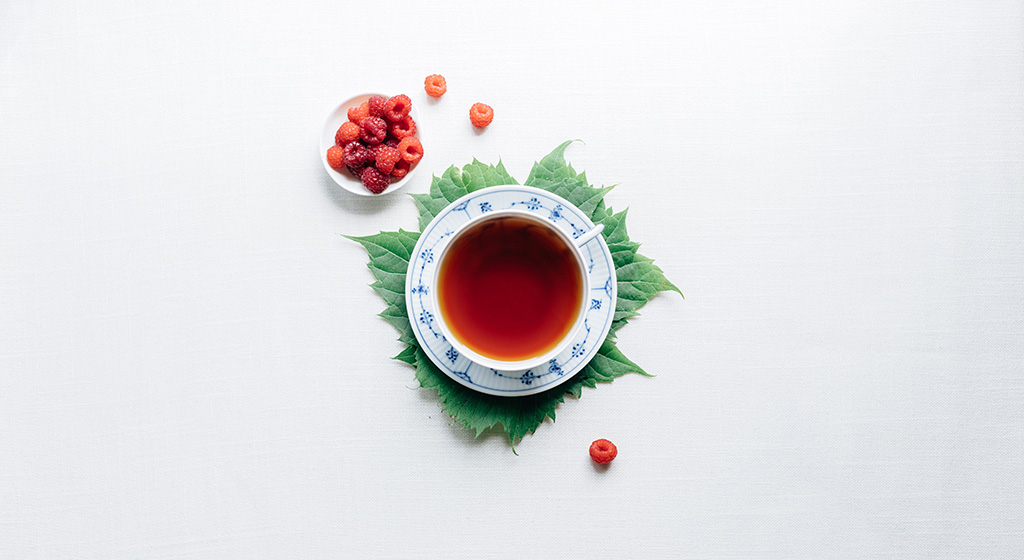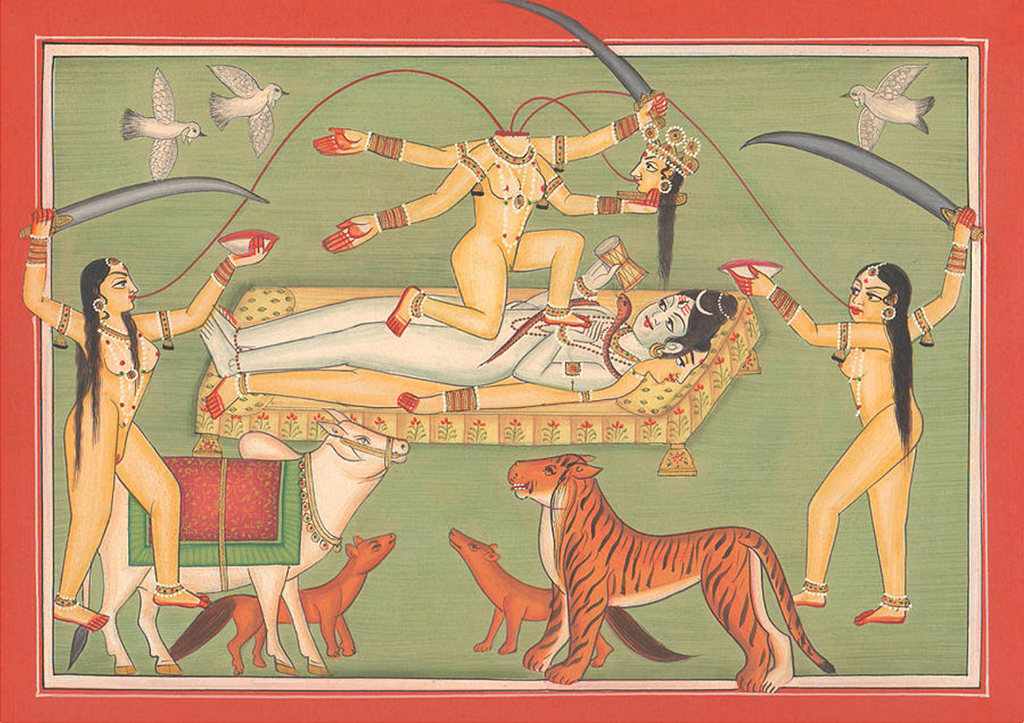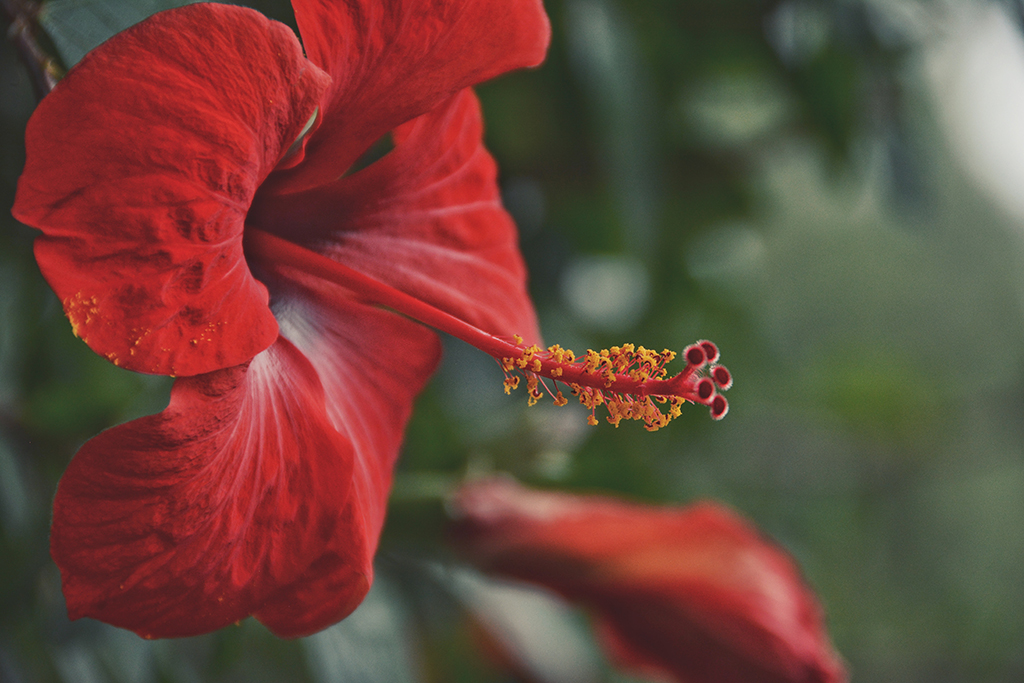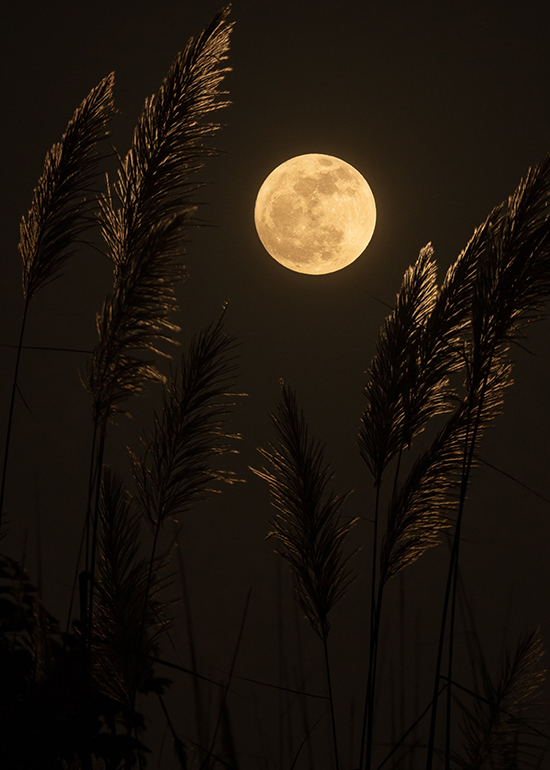

A delicate, nuanced appreciation of the seasons was integral to the Vedic world-view. After dramatic season of rains comes the beauty of Autumn or Sharad. This is a time of clear skies and languid sun, when flowers bloom, a gentle breeze blows and all the world seems to be in a state of perfect balance. It is this balance, this sense of harmony, a golden mean, that the Vedics attributed to this beautiful season. To live through the perfect Sharad rtu was the benediction they sought

Like a lily in full bloom, or a woman in white but glowing with the deep hued passion of a blue lotus; may this autumn grant you the fulfilment of all that you love deeply.
Sharad or Autumn in India is the season of sustenance. Sharad rtu consists of the time span encompassing the Indian calendar months of Ashwina and Kartika. It is the season of grace and beauty in the age-old subcontinental tradition of identifying distinctive seasons, each with their own characteristics and blessings.
The first reference to this season occurs in the Rig Veda. The Purusa Sukta of Mandala X of the Rig Veda mentions Sharad rtu by name while describing a creation myth. In this iteration, creation is the result of a primordial sacrifice, that of the Purusa or the first man. And when the Cosmic man was the sacrifice, Basanta or Spring became the Ghee; Summer or Grishma was firewood; Sharad was food or grain offering and Varsha or the Monsoon was the water used to cleanse the sacrifice.
यत्पुरुषेण हविषा देवा यज्ञमतन्वत ।
वसन्तो अस्यासीदाज्यं ग्रीष्म इध्मः शरद्धविः ॥६॥
Yatpurushena havisha Deva yajnam atanvata
Vasanto asyasidajyam Grishma idhmash sharaddhavihi
Seasons or Rtus are critical in the Vedic schema and the seasons are referred to constantly in the entirety of Vedic literature. Each season is defined through its own characteristics and is even personified.
After the tumult of Varsha or Monsoon, the clear skies and the clear running water of Autumn is a welcome relief. Clarity; of the waters, the sky and air; is an oft repeated descriptor for Autumn in the Vedic and the subsequent literature. The Bhagvata Purana, also known as the Srimad Bhagvata Maha Purana, which is thought to have been composed at least a millennium after the Vedic age, echoes the Vedic description of Sharad in Canto X when it describes it as the season of clear and pure water that plays host to fragrant lotuses that bloom; the season of clear skies and mellow sunshine.

The full moon night of Ashwina is Sharad Purnima, mythologised as the most radiant of all the full moons. This is the night of the Lover’s Moon, the night of the Raas Leela, a night of radiant celebration of love and happiness. And the natural beauty of flora and fauna.
The most enduring personification of Autumn is one of beauty and grace; of a period of natural splendour and social celebration. All of nature seems bedecked. The land is lush and alive; hundreds of thousands of migratory birds add to the visual and poetic vocabulary. The air is redolent with the heady perfume of lotuses, jasmine and roses, the fruit trees are still laden, the fields are bursting with grains and it seems that the gods themselves descend to celebrate the season of splendour.
Sharad rtu is described as a period of harmony and grace; qualities that are consistently identified with the feminine element. The second half of the year; the beginning of which is marked by the entry of the Sun into the zodiac constellation of Cancer (Karka Sankranti), which falls around the Summer Solstice; is the feminine phase of the year or Dakshinayana. This is the season of the goddesses and fragrant nights.
In an older time, when life was lived more closely aligned to the cycles of nature, Dakshinayana was the period of return. After the toil and travel of the first half of the year, this is when everyone was homeward bound, ideally just before the Monsoon descended in all its glory, making travel impossible. And after the cleansing rain came the season of plenitude, when men and women came together to celebrate the bounty of the land and give thanks to the goddess, to whom the fertility of the land and home was attributed.
Sharad rtu is thought to be named after Sharada, the goddess who presides over the power of Vac or speech and learning and fine arts. The arrival of Sharad, on the first day of the month of Ashwina, ushers in the season of celebrating the goddess. The Dakshinayana Navratri or the nine nights of the Goddess fall in the month of Ashwina. The moons of Ashwina and Kartika, the full moon and the dark moon, are especially celebrated in our culture.
The full moon night of Ashwina is Sharad Purnima, mythologised as the most radiant of all the full moons. This is the night of the Lover’s Moon, the night of the Raas Leela, a night of radiant celebration of love and happiness. And the natural beauty of flora and fauna. The night of the most revered dark moon is Diwali, Kartika Amavasya, when thousands of diyas are lighted across homes to welcome Lakshmi, the goddess of wealth and grace.
In the Vedic worldview, to live through the perfect Sharad rtu was considered a true blessing and in the Yajur Veda it was invoked in the personification of a life that is long and lived with abundance.
Let me live a hundred Sharad rtus II
Let me see a hundred Sharad rtus II
Let me enjoy a hundred Sharad rtus II
Let me hear a hundred Sharad rtus II
Let me live invincible a hundred Sharad rtus II
This is wonderful!
How much I enjoy reading such pieces from Paro. I feel more thoughtful and connected to our culture. Thank you!